Multiple - Definition, Examples, Quiz, FAQ, Trivia
Learn what multiples are with easy explanations, multiplication charts, and practice activities
What is a Multiple?
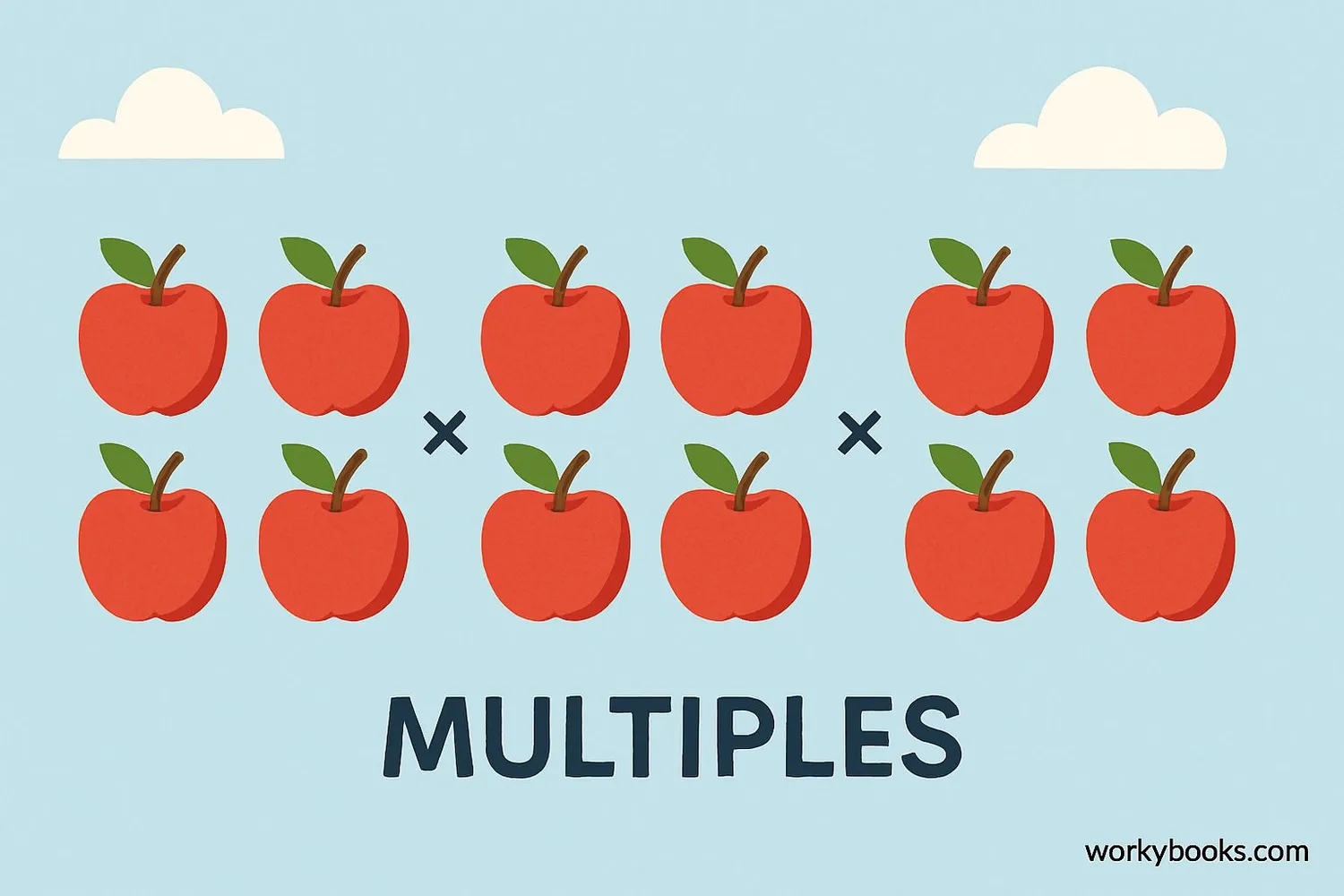
A multiple is the product of a number and any whole number. In simpler terms, multiples are what you get when you multiply a number by 1, 2, 3, and so on.
For example, the multiples of 3 are: 3, 6, 9, 12, 15, 18, 21, 24, 27, 30, and so on. These are the numbers you get when you multiply 3 by 1, 2, 3, 4, 5, etc.
Think of multiples as the "times tables" for a number. Every number has an infinite number of multiples that go on forever!
Key Concept
A multiple is the result of multiplying a number by any whole number (1, 2, 3, 4, ...).
How to Find Multiples
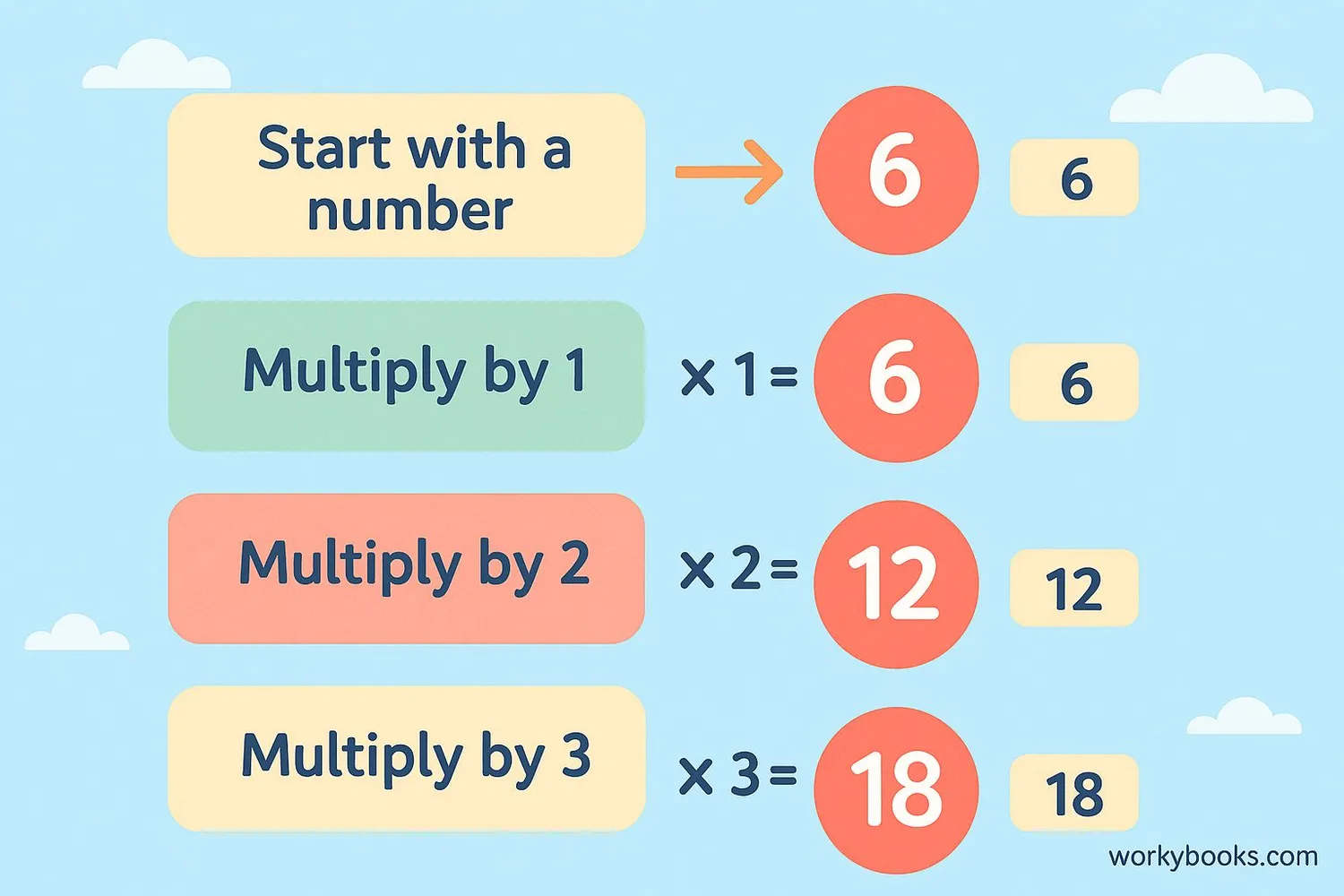
Finding multiples of a number is simple! Just multiply the number by 1, 2, 3, 4, and so on.
Finding Multiples
To find multiples of any number, multiply it by 1, 2, 3, 4, 5, and continue.
Example: Find the first five multiples of 4
Step 1: 4 × 1 = 4
Step 2: 4 × 2 = 8
Step 3: 4 × 3 = 12
Step 4: 4 × 4 = 16
Step 5: 4 × 5 = 20
So the first five multiples of 4 are: 4, 8, 12, 16, and 20.
Remember
Every number is a multiple of itself because any number multiplied by 1 equals itself.
Skip Counting with Multiples
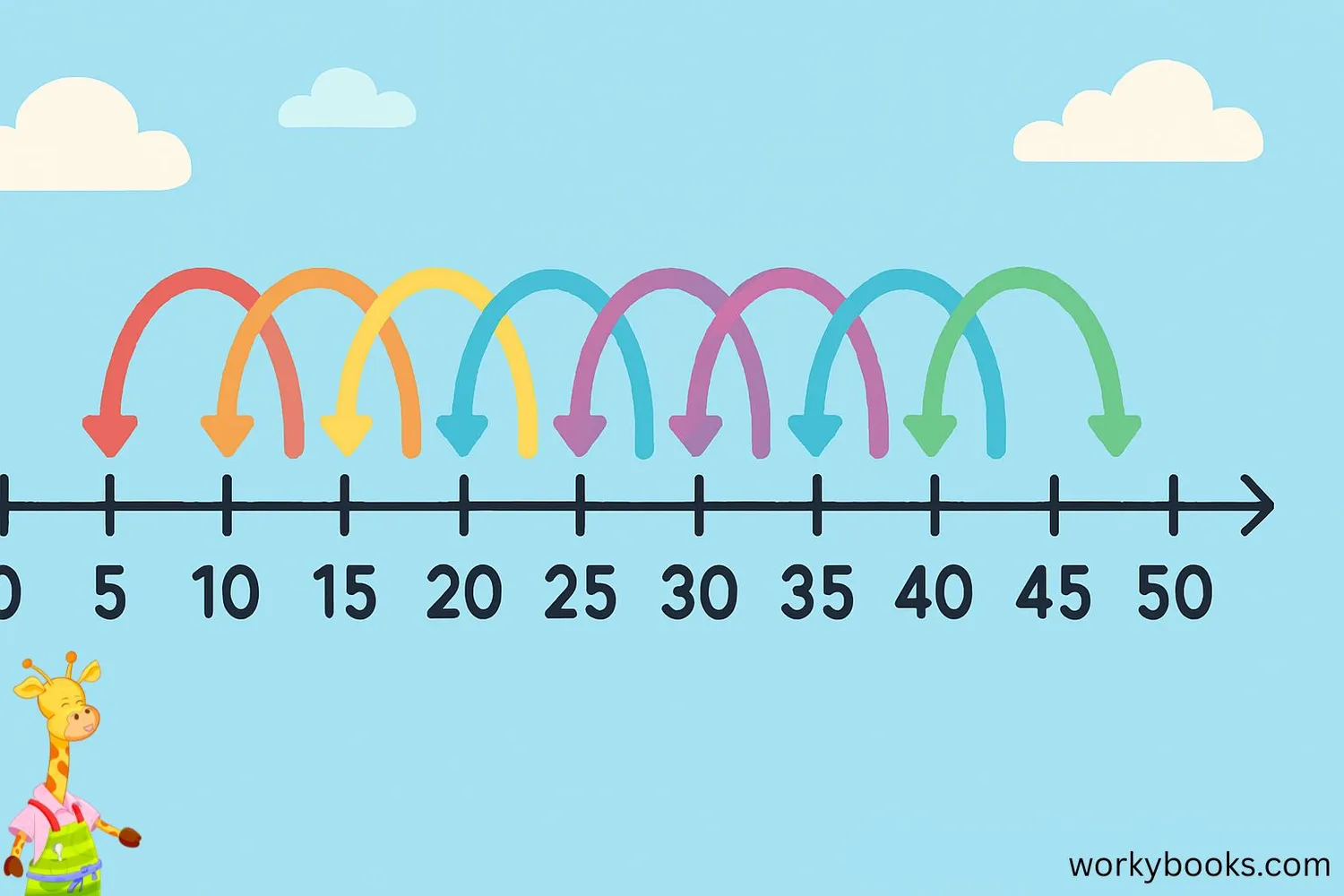
Skip counting is counting forward by numbers other than 1. It's a helpful way to find multiples quickly!
When you skip count by a number, you're actually listing its multiples. For example:
Skip counting by 2s: 2, 4, 6, 8, 10, 12, 14, 16, 18, 20...
(These are the multiples of 2)
Skip counting by 5s: 5, 10, 15, 20, 25, 30, 35, 40, 45, 50...
(These are the multiples of 5)
Skip counting by 10s: 10, 20, 30, 40, 50, 60, 70, 80, 90, 100...
(These are the multiples of 10)
Skip Counting Patterns
| Number | Skip Counting Pattern | First 5 Multiples |
|---|---|---|
| 2 | 2, 4, 6, 8, 10... | 2, 4, 6, 8, 10 |
| 3 | 3, 6, 9, 12, 15... | 3, 6, 9, 12, 15 |
| 4 | 4, 8, 12, 16, 20... | 4, 8, 12, 16, 20 |
| 5 | 5, 10, 15, 20, 25... | 5, 10, 15, 20, 25 |
| 6 | 6, 12, 18, 24, 30... | 6, 12, 18, 24, 30 |
Practice Tip
Practice skip counting to quickly find multiples without doing multiplication each time.
Common Multiples
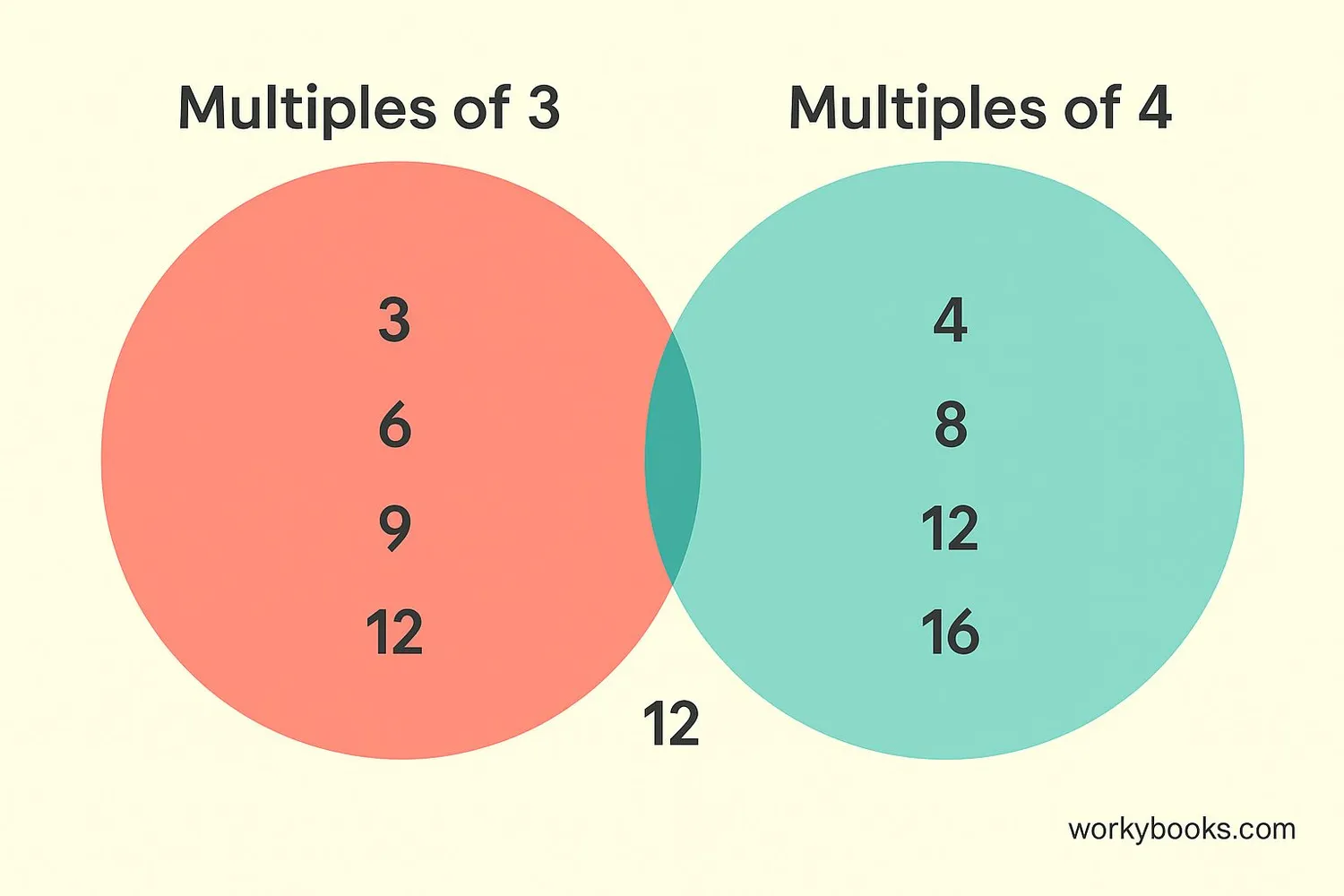
A common multiple is a number that is a multiple of two or more numbers. In other words, it appears in the multiplication tables of different numbers.
Let's find common multiples of 3 and 4:
Multiples of 3: 3, 6, 9, 12, 15, 18, 21, 24, 27, 30...
Multiples of 4: 4, 8, 12, 16, 20, 24, 28, 32, 36, 40...
Which numbers appear in both lists? 12, 24, 36... These are the common multiples of 3 and 4.
The smallest common multiple of two numbers is called the Least Common Multiple (LCM). For 3 and 4, the LCM is 12.
Finding Common Multiples
To find common multiples of two numbers:
1. List the multiples of each number
2. Find numbers that appear in both lists
Let's try with 2 and 5:
Multiples of 2: 2, 4, 6, 8, 10, 12, 14, 16, 18, 20...
Multiples of 5: 5, 10, 15, 20, 25, 30, 35, 40, 45, 50...
Common multiples: 10, 20, 30, 40...
Least Common Multiple (LCM): 10
Remember
Common multiples are useful when comparing fractions or finding patterns in numbers.
Real-World Examples
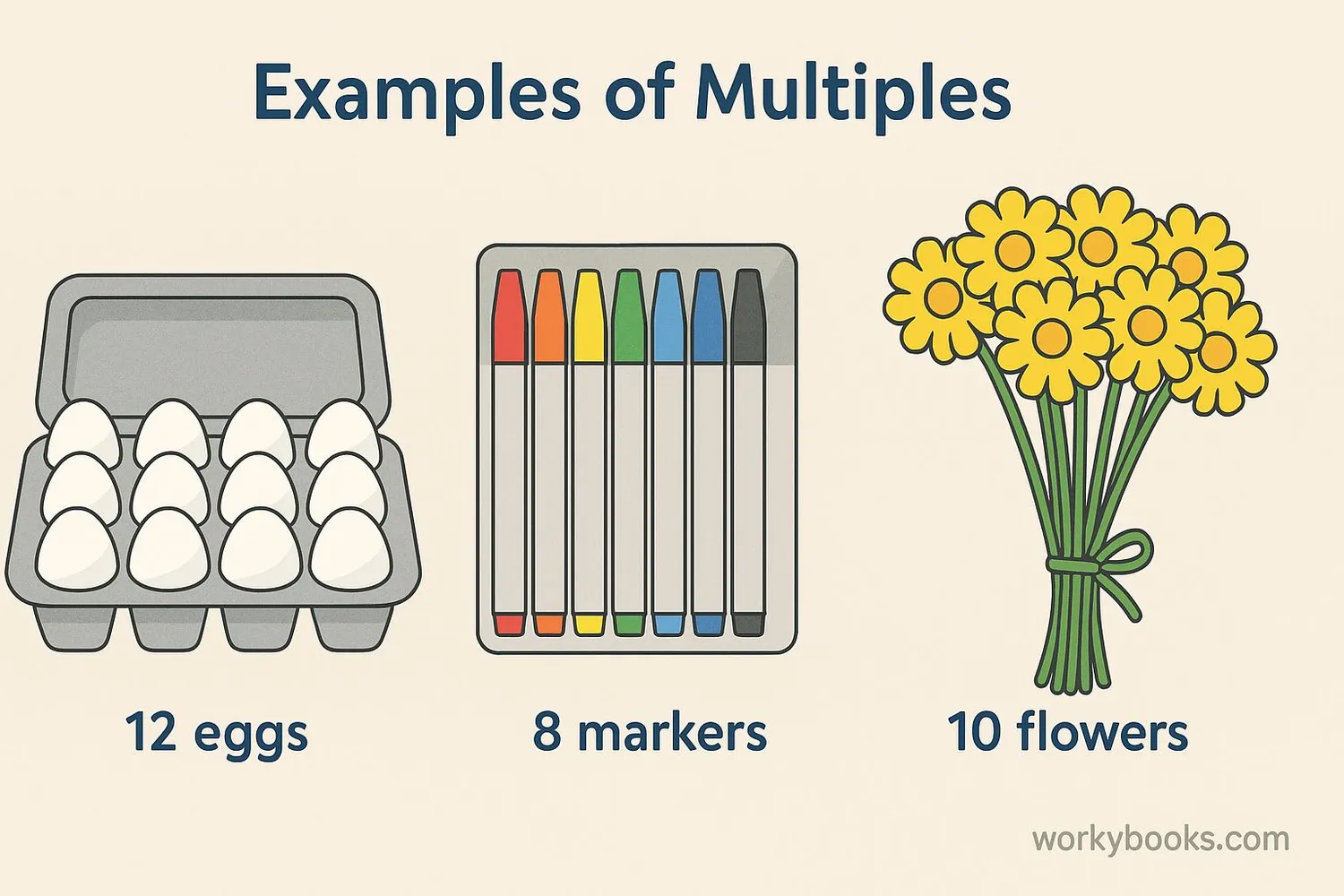
Multiples are all around us in daily life! Here are some examples:
Example 1: Egg cartons often hold 12 eggs. If you have 3 cartons, how many eggs do you have?
Solution: 12 × 3 = 36 eggs (36 is a multiple of 12)
Example 2: A pack of markers contains 8 markers. How many markers are in 5 packs?
Solution: 8 × 5 = 40 markers (40 is a multiple of 8)
Example 3: A bus has 4 wheels. How many wheels do 6 buses have?
Solution: 4 × 6 = 24 wheels (24 is a multiple of 4)
Example 4: A week has 7 days. How many days are in 4 weeks?
Solution: 7 × 4 = 28 days (28 is a multiple of 7)
Look for multiples in your daily life - packages, groups of objects, or even when telling time!
Identify Multiples Practice
Which of these numbers are multiples of 6? Click to check your answer.
Real-World Connection
Multiples help us count groups of objects quickly without counting each item one by one.
Multiples Practice Quiz
Test your understanding of multiples with this 5-question quiz. Choose the correct answer for each question.
Frequently Asked Questions
Here are answers to common questions about multiples:
Math Trivia
Discover interesting facts about multiples and numbers:
Ancient Multiplication
The ancient Egyptians used a method called "doubling" to multiply numbers. This method is based on the concept of multiples - they would create tables of multiples to solve multiplication problems.
Perfect Numbers
A perfect number is a number that equals the sum of its proper factors (factors excluding itself). The first perfect number is 6, because its factors (1, 2, 3) add up to 6. The next is 28 (1+2+4+7+14=28).
Number Patterns in Nature
Many patterns in nature follow mathematical sequences based on multiples. Sunflower seeds grow in spirals that are often multiples of Fibonacci numbers (1, 1, 2, 3, 5, 8, 13, 21, ...).
Largest Known Prime
The largest known prime number (as of 2021) is 282,589,933 − 1. It has 24,862,048 digits! Prime numbers are special because their only multiples are themselves and 1.





